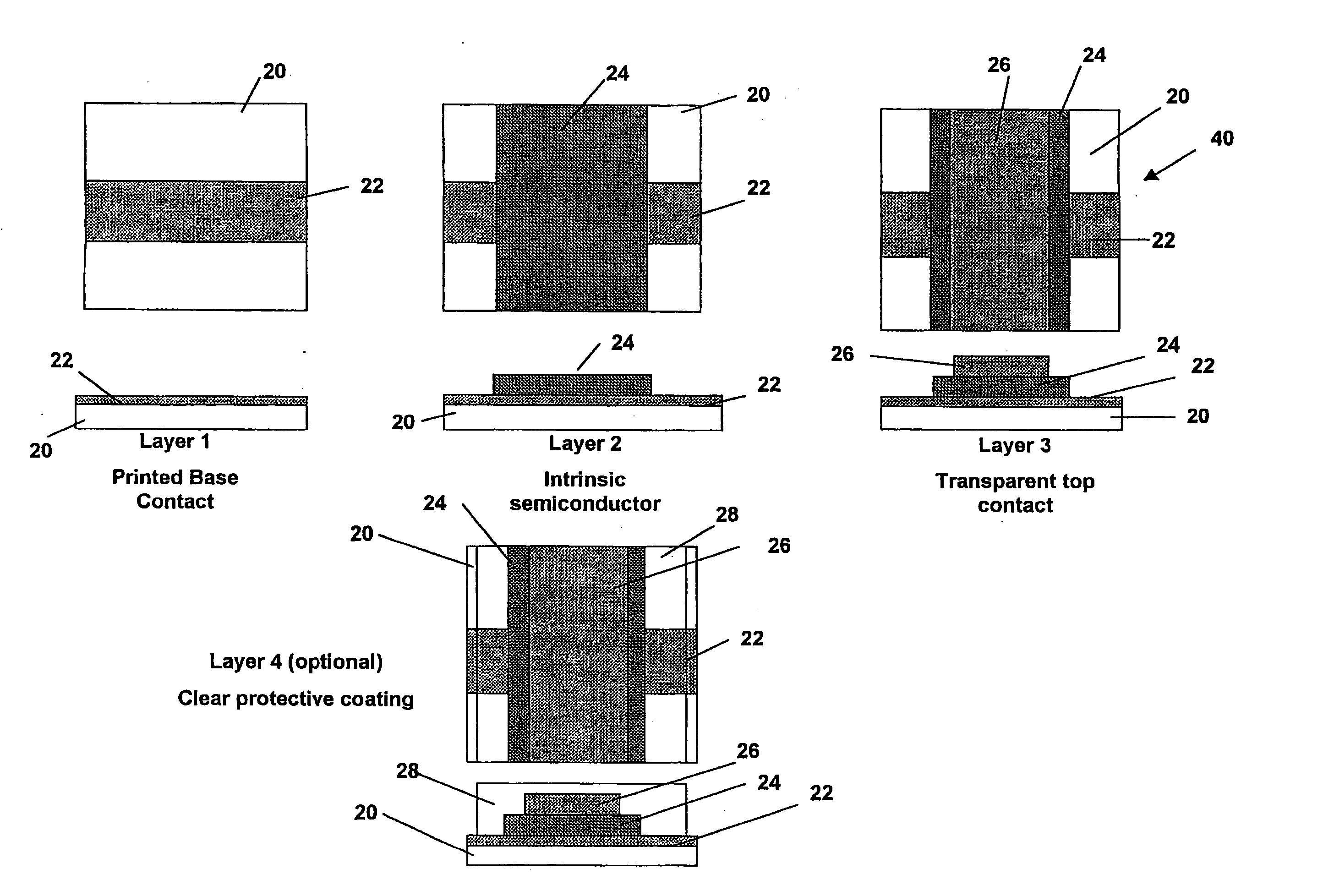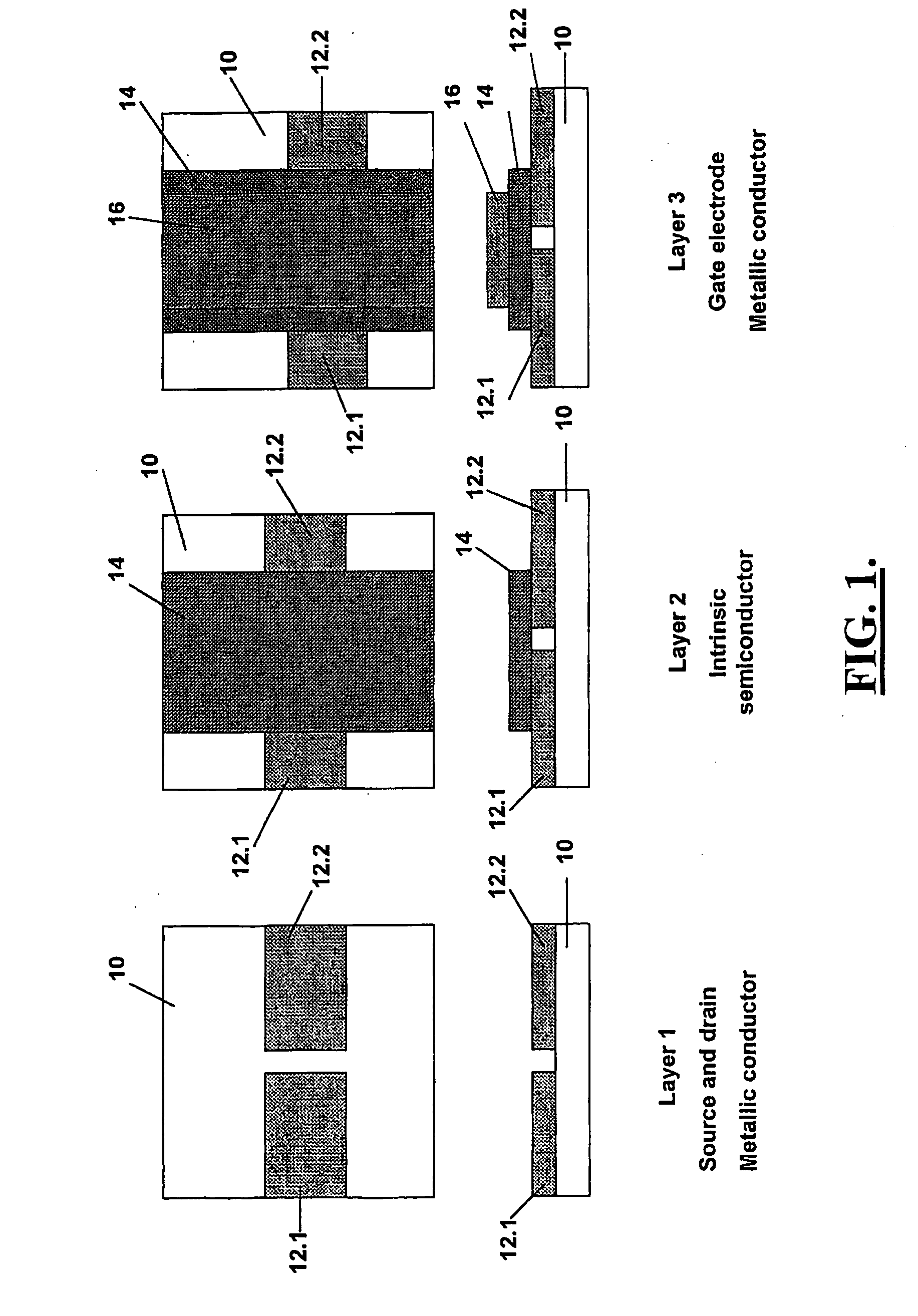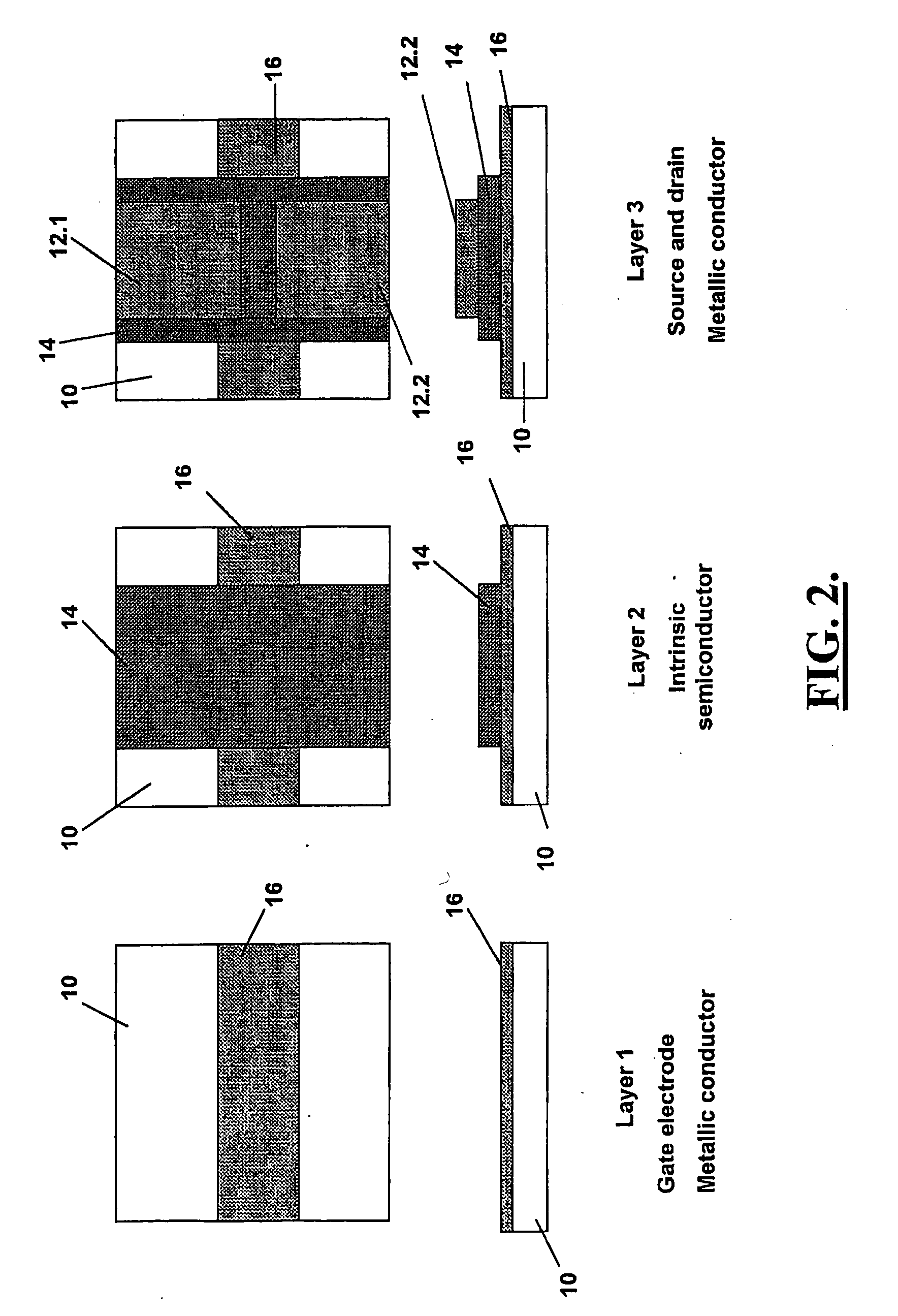Thin film semiconductor device and method of manufacturing a thin film semiconductor device
a thin film semiconductor and manufacturing method technology, applied in the direction of sustainable manufacturing/processing, final product manufacturing, basic electric elements, etc., can solve the problems of limiting the size of the semiconductor device, degrading according to the process, and high production cos
- Summary
- Abstract
- Description
- Claims
- Application Information
AI Technical Summary
Problems solved by technology
Method used
Image
Examples
example 2
[0035]FIG. 2 shows a bottom gate MS-FET comprising three thin film semiconductor layers which are supported on a substrate 10 of paper sheet. The bottom gate MS-FET is the same as the top gate MS-FET illustrated in FIG. 1, with the only difference being that the semiconductor layers have been reversed to form a bottom gate field effect transistor. This allows direct connection of other active components to the source and drain of the transistor for faster switching. The same reference numerals are used in FIG. 2 to designate features of the bottom gate MS-FET that are the same as those of the top gate MS-FET shown in FIG. 1. In this example, the same printing process and material used in the top gate MS-FET of Example 1, is used for the various semiconductor layers.
[0036] With reference to FIG. 6 of the drawings, the current-voltage characteristics of a prototype bottom gate MS-FET manufactured by the Applicant in accordance with the invention, are illustrated. The prototype MS-FET...
example 3
[0037] With reference to FIG. 3 of the drawings, a thin film semiconductor in the form of a photovoltaic cell 40 is shown which comprises an intrinsic semiconductor 24 (layer 2) sandwiched between two electrodes. More particularly, the photovoltaic cell comprises a first active layer in the form of a metallic base contact 22 of, for example, colloidal silver that is printed onto a major surface of a paper substrate 20 of plain white office paper such as Mondi Rotatrim wood free paper. The second active layer in the form an intrinsic semiconductor, is applied to the first layer. The second layer comprises, for example, colloidal nc-Si which is printed onto the first layer. A third active layer which forms a top contact is a transparent p-type conductor 26, for example, of colloidal indium tin oxide (ITO) such as Dupont Luxprint 7162E translucent conductor material, which is printed onto the second layer. The fourth layer which is optional, is in the form of a clear protective coating...
example 4
[0039] This example shows a construction of a photovoltaic battery which comprises three layers which are deposited onto a paper substrate 20. The battery comprises three photovoltaic cells 40 which are connected in series. The first layer is in the form of a printed metallic base contact 50, for example, of colloidal silver which is printed onto the paper substrate 10. The second layer comprises a single intrinsic semiconductor layer or a semiconductor structure in n-i-p sequence comprising, for example, a colloidal nc-Si layer that is printed onto the first layer. The photovoltaic battery includes a third layer comprising a transparent top contact 54 of, for example, colloidal ITO, that is printed onto the second layer. It will be appreciated that individual battery cells are laid down as strips across the paper substrate 10 by overlapping the top and bottom contacts of neighbouring strips, the cells are automatically connected together in series.
[0040] Only two external connecti...
PUM
 Login to View More
Login to View More Abstract
Description
Claims
Application Information
 Login to View More
Login to View More - R&D
- Intellectual Property
- Life Sciences
- Materials
- Tech Scout
- Unparalleled Data Quality
- Higher Quality Content
- 60% Fewer Hallucinations
Browse by: Latest US Patents, China's latest patents, Technical Efficacy Thesaurus, Application Domain, Technology Topic, Popular Technical Reports.
© 2025 PatSnap. All rights reserved.Legal|Privacy policy|Modern Slavery Act Transparency Statement|Sitemap|About US| Contact US: help@patsnap.com



